Baking Pans
Most Popular
-
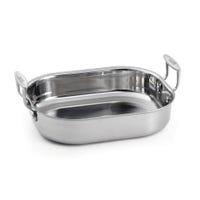 Tablecraft CW2034 11.3 qt Stainless Steel Induction Roaster | 16 5/8" x 13 5/8"Quick ShipBurkett Price: $134.99 / Each
Tablecraft CW2034 11.3 qt Stainless Steel Induction Roaster | 16 5/8" x 13 5/8"Quick ShipBurkett Price: $134.99 / Each -
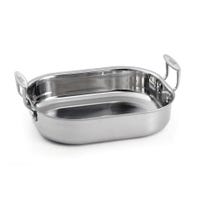 Tablecraft CW2032 6 qt Stainless Steel Induction Roaster | 14 1/2" x 11 5/8"Quick ShipBurkett Price: $104.99 / Each
Tablecraft CW2032 6 qt Stainless Steel Induction Roaster | 14 1/2" x 11 5/8"Quick ShipBurkett Price: $104.99 / Each -
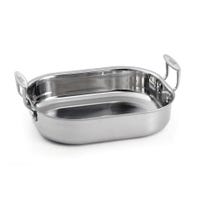 Tablecraft CW2030 3.5 qt Stainless Steel Induction Roaster | 11 1/2" x 9 9/16"Quick ShipBurkett Price: $79.99 / Each
Tablecraft CW2030 3.5 qt Stainless Steel Induction Roaster | 11 1/2" x 9 9/16"Quick ShipBurkett Price: $79.99 / Each -
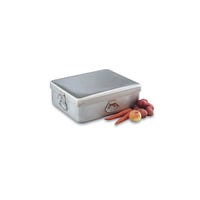 Vollrath 20-7/8" x 17-3/8" Aluminum Roast Pan w/ Cover, 56 qt. | Model No. 68390Quick ShipRetail Price: $493.60 / EachLog in or call 800-828-8564 for best price
Vollrath 20-7/8" x 17-3/8" Aluminum Roast Pan w/ Cover, 56 qt. | Model No. 68390Quick ShipRetail Price: $493.60 / EachLog in or call 800-828-8564 for best price -
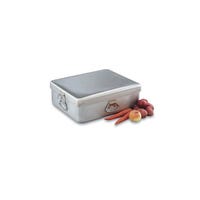 Vollrath 21-5/8" x 18-1/8" Aluminum Roast Pan Cover, for 68390 | Model No. 68392Quick ShipRetail Price: $246.55 / EachLog in or call 800-828-8564 for best price
Vollrath 21-5/8" x 18-1/8" Aluminum Roast Pan Cover, for 68390 | Model No. 68392Quick ShipRetail Price: $246.55 / EachLog in or call 800-828-8564 for best price -
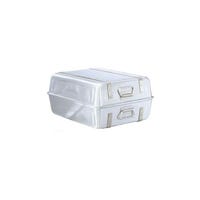 Vollrath 24" x 18" Aluminum Roast Pan Bottom, 29 qt. | Model No. 68362Quick ShipRetail Price: $181.45 / EachLog in or call 800-828-8564 for best price
Vollrath 24" x 18" Aluminum Roast Pan Bottom, 29 qt. | Model No. 68362Quick ShipRetail Price: $181.45 / EachLog in or call 800-828-8564 for best price -
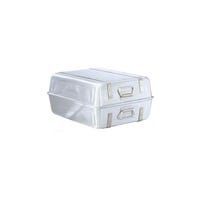 Vollrath 24" x 18" Aluminum Roast Pan Top, 29 qt. | Model No. 68361Quick ShipRetail Price: $178.40 / EachLog in or call 800-828-8564 for best price
Vollrath 24" x 18" Aluminum Roast Pan Top, 29 qt. | Model No. 68361Quick ShipRetail Price: $178.40 / EachLog in or call 800-828-8564 for best price -
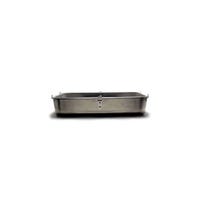 Vollrath 16" x 20" Aluminum Roast Pan Bottom | Model No. 448212Quick ShipRetail Price: $171.10 / EachLog in or call 800-828-8564 for best price
Vollrath 16" x 20" Aluminum Roast Pan Bottom | Model No. 448212Quick ShipRetail Price: $171.10 / EachLog in or call 800-828-8564 for best price -
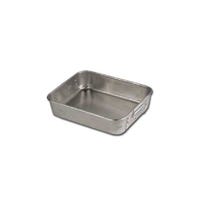 Vollrath 16" x 20" Aluminum Roast Pan | Model No. 4482Quick ShipRetail Price: $155.25 / EachLog in or call 800-828-8564 for best price
Vollrath 16" x 20" Aluminum Roast Pan | Model No. 4482Quick ShipRetail Price: $155.25 / EachLog in or call 800-828-8564 for best price -
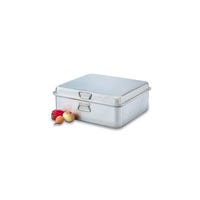 Vollrath 19-13/16" x 21-13/16" Aluminum Roast Pan Top, 23 qt. | Model No. 68364Quick ShipRetail Price: $113.75 / EachLog in or call 800-828-8564 for best price
Vollrath 19-13/16" x 21-13/16" Aluminum Roast Pan Top, 23 qt. | Model No. 68364Quick ShipRetail Price: $113.75 / EachLog in or call 800-828-8564 for best price -
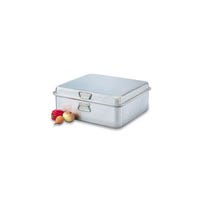 Vollrath 19-13/16" x 21-13/16" Aluminum Roast Pan Top, 16 qt. | Model No. 68363Quick ShipRetail Price: $98.10 / EachLog in or call 800-828-8564 for best price
Vollrath 19-13/16" x 21-13/16" Aluminum Roast Pan Top, 16 qt. | Model No. 68363Quick ShipRetail Price: $98.10 / EachLog in or call 800-828-8564 for best price -
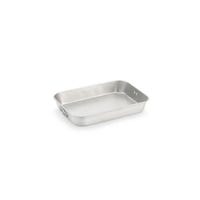 Vollrath 17-5/8" x 11-3/4" Aluminum Roast Pan | Model No. 68257Quick ShipRetail Price: $45.20 / EachLog in or call 800-828-8564 for best price
Vollrath 17-5/8" x 11-3/4" Aluminum Roast Pan | Model No. 68257Quick ShipRetail Price: $45.20 / EachLog in or call 800-828-8564 for best price
Frequently Asked Questions About Baking Pans
What are the benefits of a round cake pan?
A round cake pan is a staple in any chef's kitchen. While most layered cakes use the round mold, some places use several layers of the round cakes to sculpt many other shapes. Once the cake layers are piled upon each other, the chef will take a knife and carve the cake as an artist would chisel a slab of marble. Sculpted cakes are typically held together by a firmer frosting called rolled fondant. The thicker, dough-like consistency gives the cake a smooth appearance and can be molded to fit the cake like a glove. Ideas for sculpted cakes are really only limited by the creator's imagination and can be themes for sports, cars, animals or cartoon characters. The base for a sculpted cake can be up to eight or ten round cakes. When a cake is this tall, it is a good idea to insert several round dowels down the center of the cake to give it added stability. The rolled fondant will help quite a bit, but the dowels will prevent the smaller shifts that may happen while transporting a cake that large. Also, since sculpted cakes can take up to several days to make, it is a good idea to start with the large base in sections, that way they can be stored more easily in the refrigerator while the sections are awaiting their turn for decoration.
What are springform pans mainly used for?
Springform pans are predominantly used to create cheesecake, though they can be used to create a wide variety of delicate confections. The pan comes in two pieces: a removable bottom and a round top that snaps closed during baking to provide support for delicate cakes and easily snaps open after baking so that it can be removed from the cake rather than the cake being removed from the pan. While cheesecake is the most common use for a springform pan, they can also be used to make tortes, flourless chocolate cakes and even frozen cakes. Even though these desserts may not seem delicate when you are about to take a bite, the contents of the batter make these treats initially very hard to work with. One of the most important things to remember when baking a cheesecake is to take your time. Let all ingredients reach room temperature before you start mixing them together and be sure not to over mix. Place a shallow pan of water underneath your cheesecake as it bakes to keep the oven moist and prevent the top of the cake from cracking. You'll know the cake is done when it is solid except for the center of the cake (about one inch in diameter) which will jiggle when the cake is moved.
What's the difference between a loaf pan and a bread loaf pan?
Loaf pans are designed to hold any type of loaf, be it bread, meat or otherwise. Bread loaf pans are designed specifically for bread. Although this may not seem like much at first, selecting bread loaf pans specifically for bread loaves is important to ensuring that the bread bakes and rises correctly. Some of the other types of loaf pans may not be assembled properly to form a solid loaf of bread. Bread loaf pans are sealed in at every corner and edge, making sure that the bread is baked correctly. These bread loaf pans are constructed of metal, silicone or even paper, offering a variety of options for any baker. Some prefer to use a disposable product, others like the non-stick and flexible characteristics of the silicone loaf pans. Some still prefer the reliability and durable quality that metal bread loaf pans provide. With a selection of quality vendors and options for the exact loaf size you need, you will be baking loaves of bread in no time.
What is a Pullman loaf pan?
Pullman loaf pans are responsible for creating the great bread we have all become accustomed to for making our sandwiches. Not consequently then it is also known as "sandwich loaf" or "pan bread." The bread is square and the crust is very soft, almost non-existent. It is the most common type of loaf bread on the market today. The Pullman loaf pan supposedly gets its name from the resemblance it has to Pullman cars on trains. It is long and lidded, which gives the bread its distinctive look and texture. The lid is placed on the bread during the proofing process, but not until the bread has risen near the top of the loaf pan. The bread is then baked with the lid on. Unlike many breads and cakes, it is important to remove sandwich loaf from its pan immediately after it is taken out of the oven. It can then be placed on a rack to cool..
What are some tips and tricks for perfecting the art of baking cakes?
There are many types of cakes, but there are some tips and tricks for baking cakes that always apply, no matter what type of cake you are baking. When greasing your cake pan, try cutting a piece of waxed paper to match the diameter of the cake pan and insert it after greasing the cake pan. This will completely prevent the cake from sticking to the bottom of the pan and it will leave less clean up for you. If you are flouring the pan, try sprinkling it with a little dry cocoa or cake mix. This will put a tasty spin on tradition. Once your pan is greased, only fill the pan half or a third of the way full. This will prevent spillage. Once you've poured all the batter, give the pan a shake from side to side, making sure the outer edge of the cake is higher than the middle. When the cake bakes, the middle will catch up to the sides, ensuring a more even cake. When the cake is done cooking, don't let it cool on top of the oven, set it aside, still in the pan, on a rack to cool.
What are baguettes and what is unique about baking them?
A baguette is defined by its soft, but sturdy exterior and moist interior and it is incredibly versatile bread. Tuck a half a sliced loaf into a basket and serve with herbs and oil for a tasty pre-dinner snack for your customers to eat while waiting for dinner. Serve a section of a baguette on the side of a bowl soup for dipping. Slice through the middle of the bread to make a delicious, fresh Italian sub. Baguette pans are designed to hold each individual loaf in a separate rounded section. These pans are to be used from proofing to baking. Begin by rolling out your dough and placing the finished portions in the individual divots. Allow the bread dough to proof (or rise) on its own or speed it up by using a proofing oven. Once the dough has properly risen, simply slide the pan into the oven and allow it to bake. Another method for baking the baguette dough would be to slide them off the baguette pans after they have proofed and on to a baking stone. Both methods produce crisp, golden brown bread. If you decide to bake your bread in the pan, be certain to cook on a lower temperature than you would if you were using a hearth stone to prevent burning the bottom of the loaf.
Where does Bundt cake get its name from?
Bundt cake originated in Germany and is known by many names including "Gugelhopf cake" and "Kugelhopf cake" It is defined by its ubiquitous ring shape. Since it was originally brought to the U.S. a over a century ago, the designs of Bundt pans and recipes have become incredibly varied. From red velvet to marble, the flavors of Bundt cake are numerous. What can a baker do to make their cake stand out? The answer lies in the center of the cake. Since the cake is ring-shaped, the empty center allows the cake to become a centerpiece of sorts. Place an arrangement of flowers in the center or create a bouquet of ribbons. Use the space to create a unique flair all your own. Another addition to Bundt cakes is a nice thick layer of icing drizzled across the top. The flavors of icing can be as the flavors of cake. Choose a flavor to complement your cake and spread the icing around. If the center hole is small, you can even fill it with icing for an exceptionally sweet surprise when your customer's cut into the first slice.

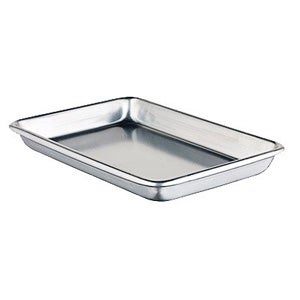

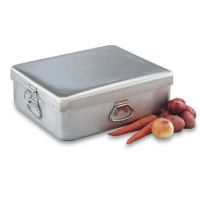
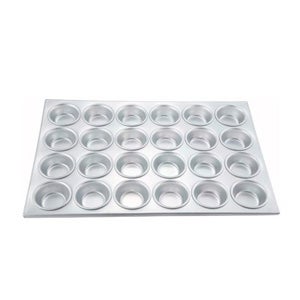
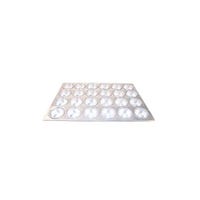
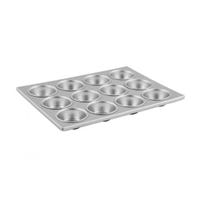
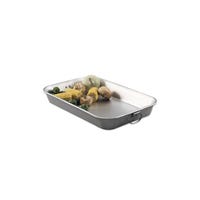
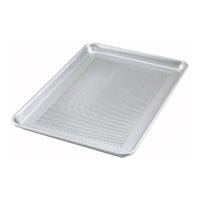
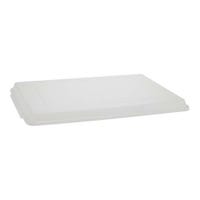

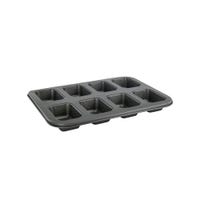
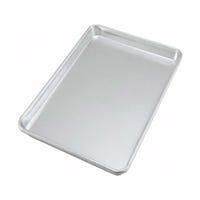


Login and Registration Form